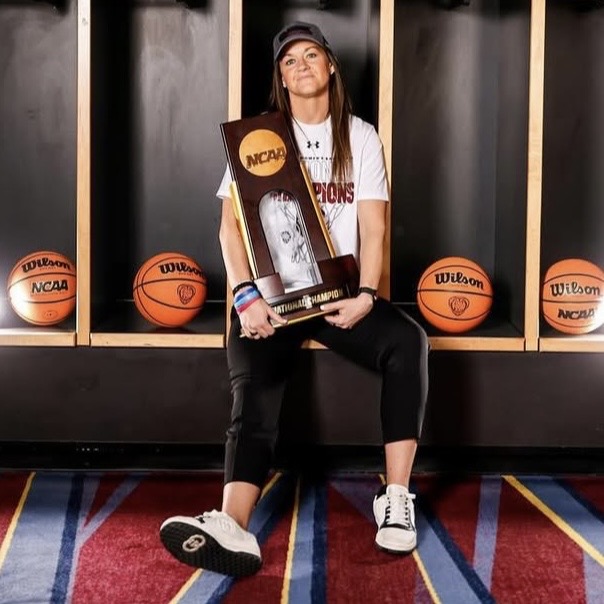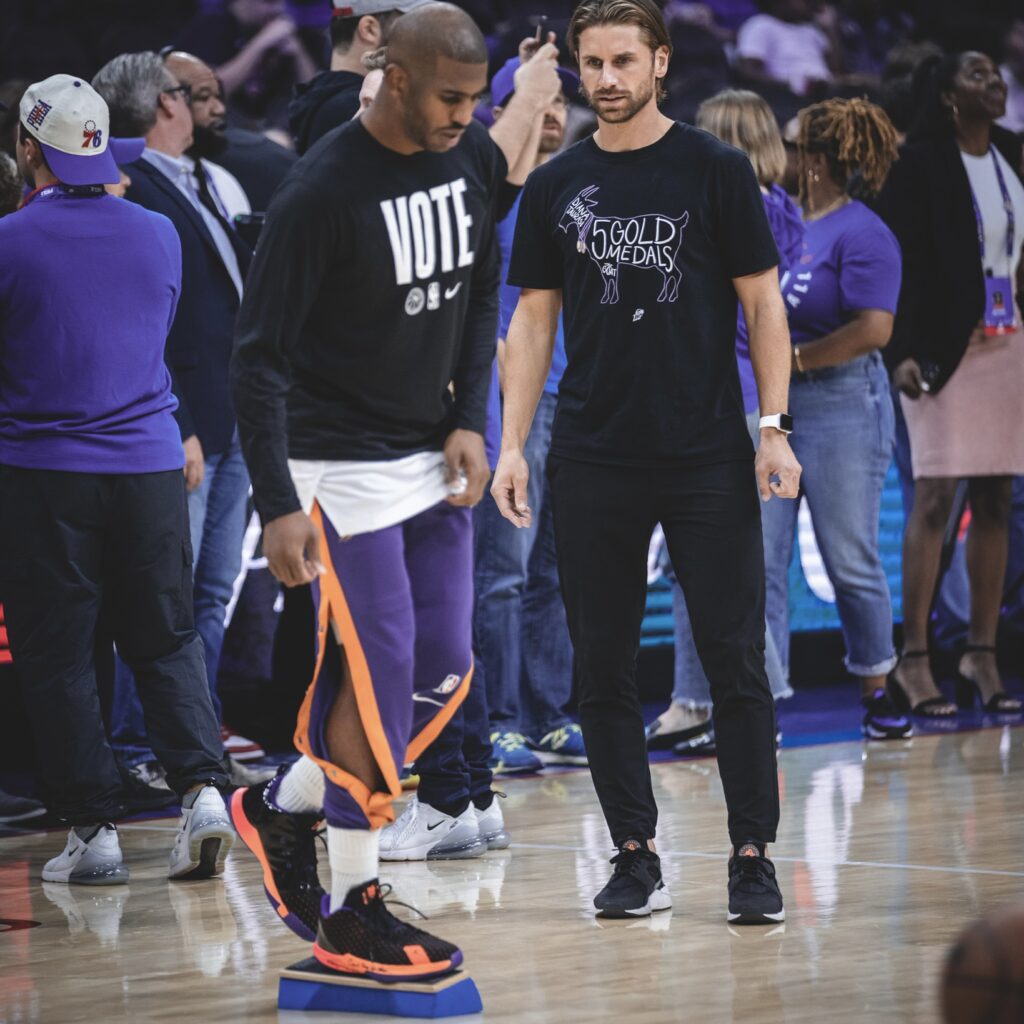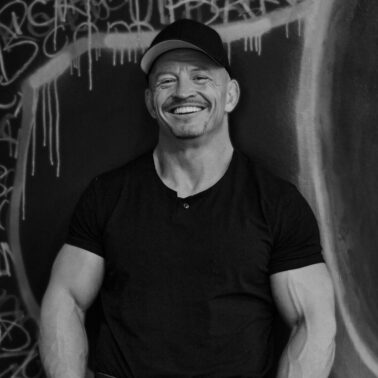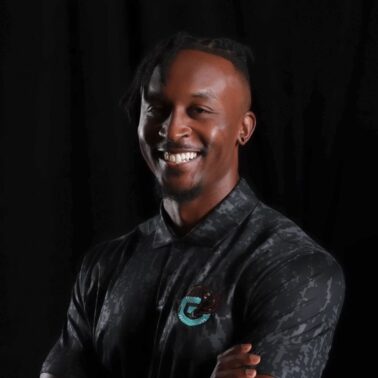“There are more opportunities than ever…off-days aren’t off anymore. Players are flying cross-country for brand shoots, then back for practice the next morning. The modern college athlete is trending towards pros.”
What You Will Learn
- How modern college coaching is shifting from control to collaboration.
- How NIL and social media reshape athlete development and mental load.
- How autonomy, trust, and consistency build championship culture.
Introduction
The college locker room has changed more in five years than in the previous fifty. Between the rise of NIL (Name, Image, and Likeness) deals, social-media branding, and the professionalization of youth sport, today’s athletes walk onto campus as small businesses wrapped in sweat suits. Their lives are an endless rotation of workouts, classes, content shoots, and brand meetings—all while trying to win games and maintain grades.
In this week’s episode of Finding Small Wins, I sat down with Molly Binetti, Director of Women’s Basketball Performance at the University of South Carolina—one of the most successful programs in college sports—to unpack how she and her staff build high performance amid team sports chaos.
Our conversation revealed that success in modern college sport isn’t just about better periodization or smarter technology. It’s about leadership as relationship: how you communicate, listen, and adapt when the rules of the game—financial, social, and psychological—change overnight.
This is a conversation about coaching the modern college athlete, but more broadly, it’s a lesson in human performance: consistency beats complexity, environment drives behavior, and culture is what you build, not what you announce.
Guest Background:
Molly Binetti has spent eight seasons with South Carolina Women’s Basketball, helping guide the Gamecocks to Final Fours and two national championships. Her coaching philosophy blends sport science with behavioral psychology, drawing from mentors across collegiate and professional sport.

A former basketball player herself, she bridges technical expertise with empathy—a rare mix in a world obsessed with outputs and metrics. Molly’s approach centers on three pillars: communication, trust, and autonomy. She sees her role not just as a strength coach but as an architect of environment—one that teaches 18- to 22-year-olds how to think, not just how to lift.
Leadership Shift: From Control to Connection
Early in her career, Binetti admits she coached with intensity.
“I came in guns blazing – I was focused on results. I forgot to build relationships first.”
Her first season nearly broke her. Resistance from players, cultural friction, and self-doubt forced a reckoning. What emerged from that trial was a leadership transformation—an evolution from technical mastery to emotional intelligence.
She began studying leadership outside sport: organizational psychology, communication, and human behavior. What she found was simple yet radical—coaching is people work. The programs, lifts, and spreadsheets are scaffolding; the structure stands only if trust holds.
In practice, Binetti shifted from dictating to dialoguing and inviting input rather than imposing it. The payoff was measurable: better engagement, reduced burnout, and a team culture defined by ownership rather than obedience.
For anyone coaching today—whether in sport, business, or medicine—her insight is clear: you can’t lead who you don’t know.
The NIL Era
When NIL legislation arrived, it cracked open a new era. College athletes could now monetize their brands, negotiate sponsorships, and manage agents—all while balancing class and competition.
“There are more distractions than ever. Off-days aren’t off anymore. Players are flying cross-country for brand shoots, then back for practice the next morning.”
The challenge isn’t just physical recovery; it’s cognitive bandwidth.
Think of an athlete’s attention as a daily energy budget. Ten years ago, it might have been split 50-50 between academics and sport. Now, NIL, travel, and social media carve off another 25–40 percent. Coaches who ignore that new tax on focus risk overtraining not just muscles but minds.
Binetti’s response has been to protect simplicity. The program’s rules are clear: NIL can’t interfere with training, class, or team commitments. Yet she also recognizes its benefits—financial literacy, networking, and personal growth.
“It’s not all bad. It’s giving players experiences and confidence they’d never have otherwise.”
The paradox of NIL is that it teaches professionalism before maturity. The job of the coach has evolved from gatekeeper to guide—helping athletes navigate opportunity without drowning in it.
Empowering Athletes Through Autonomy
Perhaps the most striking part of Binetti’s philosophy is her embrace of athlete autonomy. Where many programs still prescribe every rep, she invites collaboration.
“It should be a partnership, not a dictatorship. I want players to have a voice in what we do.”
This approach is rooted in Self-Determination Theory—a psychological model stating that humans thrive when three needs are met: competence, autonomy, and relatedness. In Binetti’s gym, those principles come to life.
Athletes choose exercises within guardrails (“You can trap-bar deadlift or rear-foot split squat—same intent, different feel”). They co-design sessions around how their bodies feel. Freshmen start with structure; seniors earn full creative control.
The result is what behavioral economists call ownership bias—we value what we help build. When athletes design part of their training, adherence skyrockets, and communication flourishes.
Binetti jokes that her athletes sometimes bring TikTok exercises into the room. “As long as it’s safe, I let them try it,” she laughs. “If it works, great. If not, they learn why.” That curiosity loop turns the weight room into a laboratory, not a courtroom.
The Female Athlete Experience: Changing the Weight Room Narrative
“Hoopers don’t want to lift,” she laughs, “and for female players, it’s even more complicated.”
The gender gap in strength training begins long before college. While boys often lift by middle school, most girls reach campus with little formal exposure to resistance work. Layer in social pressures—body image, outdated stereotypes about “bulky” muscles—and the psychological barrier can be higher than any barbell.
Binetti meets that resistance with empathy and education. Early sessions focus on movement literacy, not maxes. She asks every athlete: What makes you hesitant? What do you like or dislike? By listening first, she builds trust that opens the door to performance later.
Science backs her approach. Studies show that female athletes who begin structured strength training earlier not only reduce ACL risk by 50 percent but also report higher self-confidence and body satisfaction.
Binetti also challenges the industry to invest equally. Many women’s programs still operate with skeletal staff compared to men’s teams. “Give them the same resources,” she argues, “and you’ll see the same—or better—results.”
Consistency and Championship Culture
Behind South Carolina’s banners lies something less visible but more powerful: continuity.
“In eight years, our staff has barely changed. Same head coach, same trainers, same support. That’s rare.”
Continuity breeds trust. In professional sports, where coaching turnover is constant, that stability is a competitive advantage. It allows a shared language to form—a shorthand that transforms communication from explanation to intuition.
In the Gamecocks’ case, that stability has yielded staggering results: five Final Fours, two national titles, and a very high player availability.
What makes it work isn’t just the X’s and O’s; it’s the environment. As Binetti puts it, “You don’t have to be best friends, but you have to like and respect each other enough to solve problems together.”
This distinction—environment over culture—is vital. Culture is an outcome; environment is a variable. Coaches can’t force chemistry, but they can design conditions where it thrives: psychological safety, shared goals, laughter amid pressure.
Conclusion
Modern college coaching is no longer about who can yell louder or program better. It’s about who can listen sharper, adapt faster, and build trust deeper. As Molly Binetti shows, the future of performance isn’t a formula—it’s a relationship. The small win is remembering that every rep, conversation, and choice in the gym is a lesson in leadership.
5 Actionable Wins
- Relationships first, programming second. Technical expertise means little without human connection.
- Respect cognitive load. Athletes’ attention is finite; protect it like recovery time.
- Design with, not for. Autonomy builds ownership and long-term compliance.
- Start strength early and educate often. The earlier athletes learn movement literacy, the safer and stronger they become.
- Stability is a superpower. Continuity in staff and process compounds performance over years, not weeks.
Listen to the Full Episode Here

Episode Timeline
- 00:25 – 03:00 Binetti’s career path and early influences
- 03:00 – 07:00 The humbling first year and leadership pivot
- 07:00 – 11:00 Building relationships and defining environment
- 11:00 – 16:00 How college staffing and support systems evolved
- 16:00 – 20:00 NIL and the business of being a student-athlete
- 20:00 – 25:00 Coaching challenges in the NIL era
- 25:00 – 33:00 Creating autonomy and trust in training
- 33:00 – 47:00 Female athlete experience and body image in sport
- 47:00 – 60:00 Consistency, trust, and championship environment
- 60:00 – End Reflections on leadership and sustaining success





